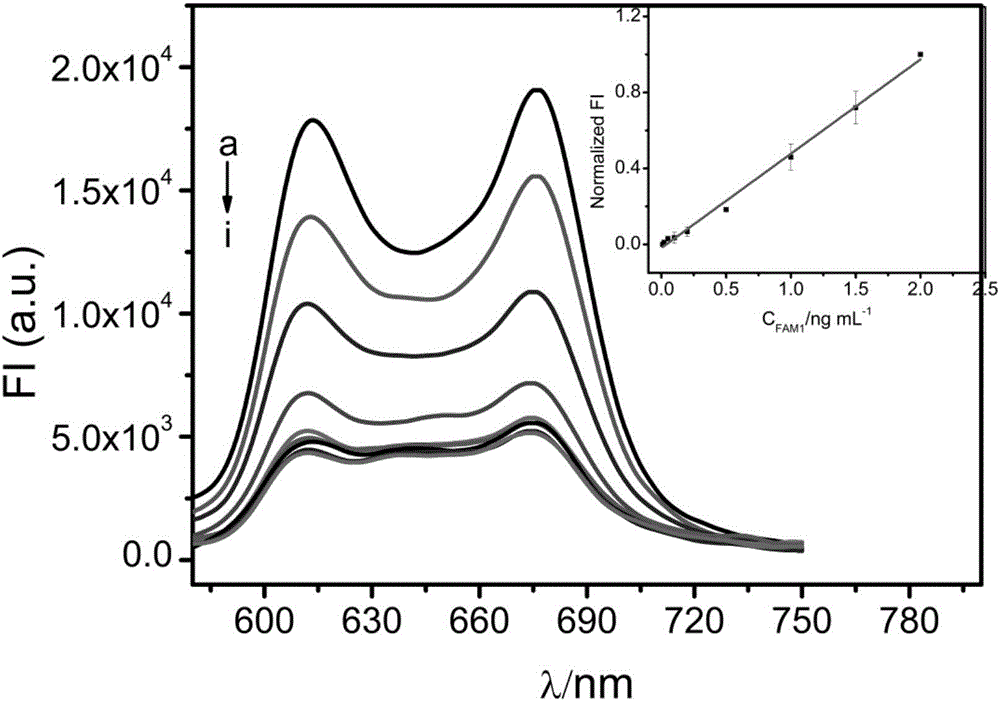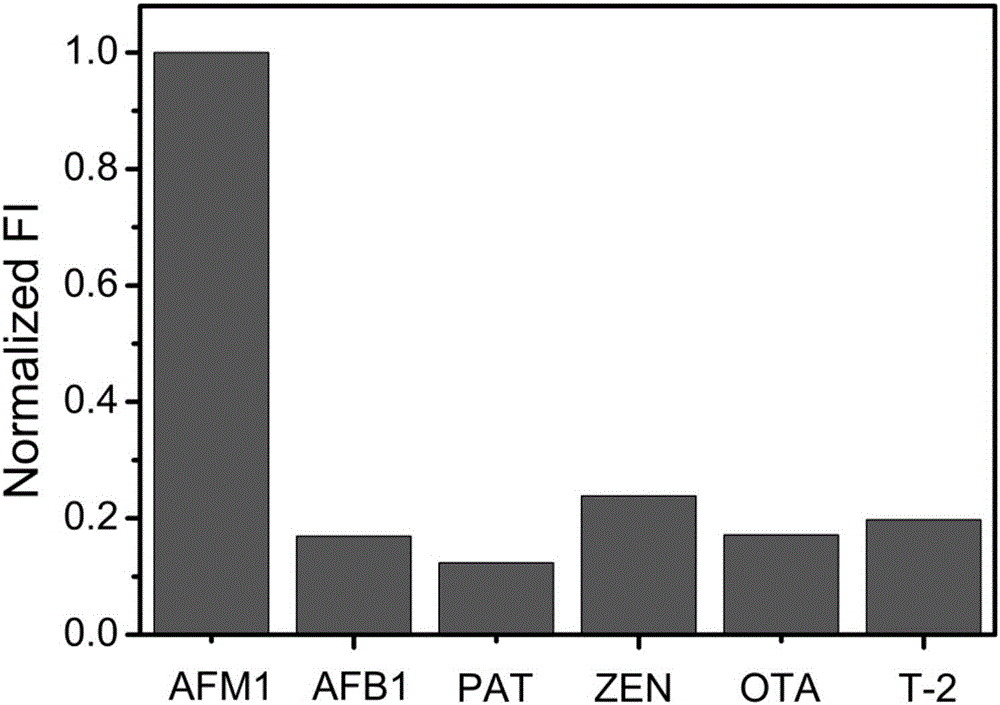Method for quickly detecting aflatoxin M1
A kind of aflatoxin, rapid technology, applied in the field of detection, can solve the problems of expensive, complicated processing, time-consuming, etc., and achieve the effect of shortening the detection time, high sensitivity and specificity
- Summary
- Abstract
- Description
- Claims
- Application Information
AI Technical Summary
Problems solved by technology
Method used
Image
Examples
Embodiment 1
[0022] Rapid detection method of aflatoxin M1
[0023] Measure the fluorescence intensity of 10ng / mL aflatoxin M1 with a fluorescence spectrophotometer (such as figure 1 shown), the excitation wavelengths are 365nm and 399nm. It can be seen from the figure that aflatoxin M1 has no peak at 619nm. After mixing 0.01-2ng / mL aflatoxin M1 standard solution with 2μM porphyrin fluorescent dye NMM, the fluorescence intensity was measured with a fluorescence spectrophotometer. The excitation wavelength is 399nm and the emission wavelength is 619nm. Taking the concentration of aflatoxin M1 as the abscissa, with (F-F 0 ) / (F'-F 0 ) is a fitting curve for the ordinate, where F 0 , F and F'represent the fluorescence intensity of NMM without aflatoxin M1, the fluorescence intensity of NMM after adding different concentrations of aflatoxin M1 and the fluorescence intensity of NMM when adding 2ng / mL aflatoxin M1 (such as figure 2 shown).
Embodiment 2
[0025] Aflatoxin B1 (AFB1), phyllotoxin (PAT), zearalenone (ZEN), ochratoxin A (OTA) and T-2 toxin were selected as competitors to study the specificity of the method. Prepare aflatoxin M1 at a concentration of 1 ng / mL and a competitor toxin at a concentration of 10 ng / mL. Mix with porphyrin dye NMM respectively, and measure its fluorescence value with a fluorescence spectrophotometer. Such as image 3 As shown, aflatoxin M1 can strongly increase the fluorescence of NMM. Competing toxins have little effect on their fluorescence. It shows that the method is specific to aflatoxin M1.
Embodiment 3
[0027] Aflatoxin B1 (AFB1), phyllotoxin (PAT), zearalenone (ZEN), ochratoxin A (OTA) and T-2 toxin were selected as competitors, and PPIX was used as a non-fluorescence-labeled porphyrin The specificity of the method when dyes. Prepare aflatoxin M1 at a concentration of 1 ng / mL and a competitor toxin at a concentration of 10 ng / mL. Mix with porphyrin dye PPIX respectively, and measure its fluorescence value with a fluorescence spectrophotometer. The excitation wavelength is 410nm and the emission wavelength is 624nm. Such as Figure 4 As shown, aflatoxin M1 can strongly increase the fluorescence of PPIX. Competing toxins have little effect on their fluorescence. It shows that the method is specific to aflatoxin M1.
PUM
| Property | Measurement | Unit |
|---|---|---|
| concentration | aaaaa | aaaaa |
Abstract
Description
Claims
Application Information
 Login to View More
Login to View More - R&D
- Intellectual Property
- Life Sciences
- Materials
- Tech Scout
- Unparalleled Data Quality
- Higher Quality Content
- 60% Fewer Hallucinations
Browse by: Latest US Patents, China's latest patents, Technical Efficacy Thesaurus, Application Domain, Technology Topic, Popular Technical Reports.
© 2025 PatSnap. All rights reserved.Legal|Privacy policy|Modern Slavery Act Transparency Statement|Sitemap|About US| Contact US: help@patsnap.com



